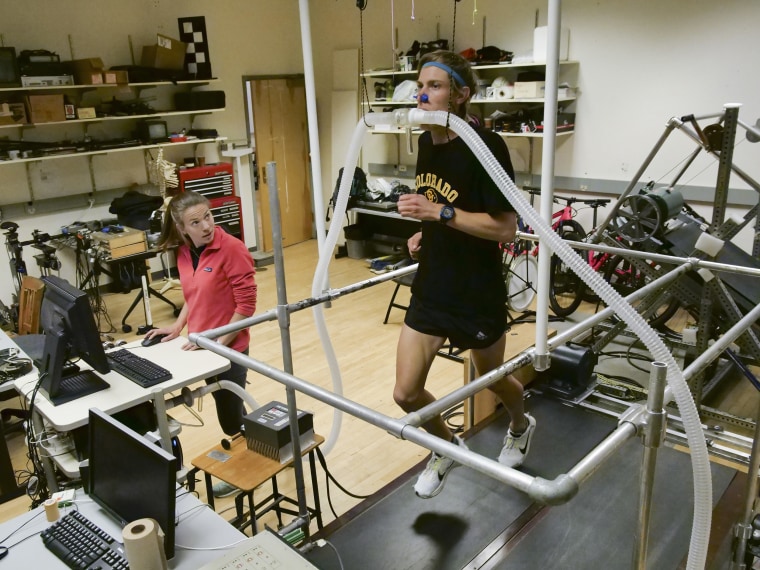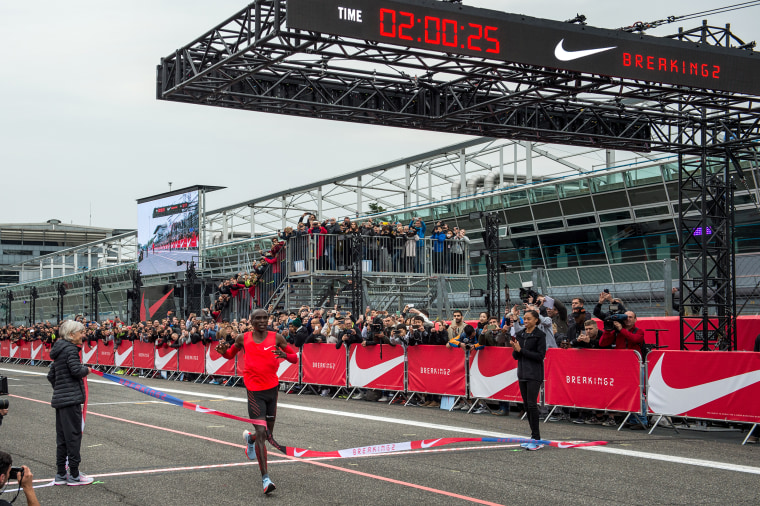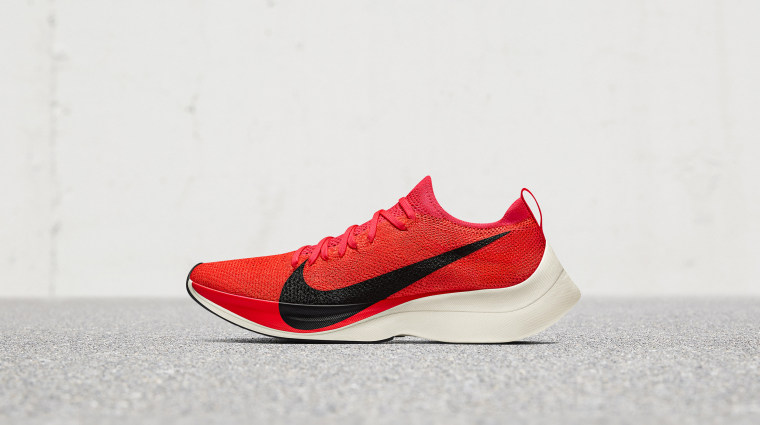Will a new generation of high-tech footwear finally make it possible for elite runners to complete a marathon — 26.2 miles — in less than two hours?
Since the 1970s, Adidas, Nike, and other shoe manufacturers have battled one another to create a shoe that will enable someone, somewhere to complete the first sub-two-hour marathon. And treadmill tests conducted recently at the University of Colorado suggest that a shoe Nike introduced to the public last summer could be just the ticket.
In the tests, runners wearing a prototype version of the company’s $250 Zoom Vaporfly got a boost in running efficiency roughly 4 percent greater than that provided by Adidas’s Adios Boost 2, the previous “gold standard” shoe favored by many elite marathoners.

The research — sponsored by Nike but published in the peer-reviewed journal Sports Medicine — indicated that if Kenyan marathoner Dennis Kimetto had been wearing Vaporflys in 2014 when he ran a 2.02:57 marathon (the current world record), he could have completed the distance almost four minutes faster.
"This new shoe is the most efficient shoe in terms of the energy required to run that anybody has ever studied,” Dr. Rodger Kram, associate professor of integrative physiology at the university and leader of the research, says in a video released by the university. “Theoretically, if it can enhance performance this much, it should get a runner well under two hours.”
In Monza, Italy last June, the current Olympic marathon champion, Eliud Kipchoge, ran a marathon in 2:00:25 in a special event aimed at breaking the two-hour mark. Wearing Vaporflys, which feature lightweight cushioning and carbon-fiber plates in their soles, Kipchoge ran almost three minutes faster than his previous best.

But that remarkable time may have been less about the shoes than the race conditions.
Dr. Michael Joyner, a Mayo Clinic researcher who predicted that a sub-two hour marathon might be physiologically possible back in 1991, notes that Kipchoge had help from a team of 30 pacemakers, who helped break the wind. What’s more, the course had no sharp turns, and Kipchoge didn’t have to slow to grab drinks because they were handed to him by a cyclist.
“He might have got a marginal gain from the shoes, but is somebody going to buy them and suddenly magically run 4 percent faster in a real race?” Joyner asks. “Unlikely.”
A runner’s ability and fitness level — as well as conditions on the course — are of paramount importance. And Joyner, who was not involved in the Colorado research, says that while it makes sense that the plate could give the foot more “recoil” when it touches the ground, it’s unclear just how much of a benefit this or any other shoe might provide.
But Joyner does believe the first sub-two-hour marathon could be coming soon — probably in a special exhibition like the one Nike mounted earlier this year. Adidas says it may hold its own “Sub2”event in 2018 or 2019, and Nike has hinted that it may organize another event aimed at breaking the two-hour barrier.
As for the first official sub-two-hour marathon — run without aids and sanctioned by the International Association of Athletics Federations — Joyner thinks that will come by 2030. As he puts it, “Everything needs to go perfectly for the right runner on the right course on the right day.”

